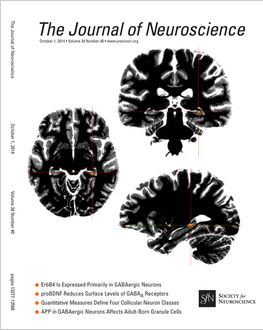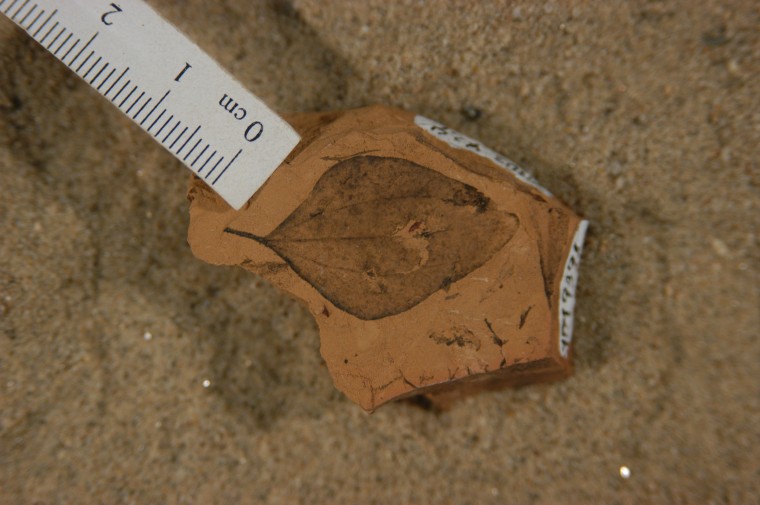Rutland: Hong Kong demonstrators not just demanding democracy, but asserting identity
McAlister examines negative prayer, from Afro-Haitian vodou to Christian evangelicism
Johnston's associated photography exhibited at Pennsylvania Academy of the Fine Arts
Jan Naegele, Gloster Aaron and several Wesleyan researchers are the co-authors of an article titled "Long-Term Seizure Suppression and Optogenetic Analyses of Synaptic Connectivity in Epileptic Mice with Hippocampal Grafts of GABAergic Interneurons," published in the October 2014 edition of The Journal of Neuroscience, Issue 34(40): 13492-13504. Naegele is professor of biology, professor of neuroscience and behavior, and director of the Center for Faculty Career Development. Aaron is associate professor of biology, associate professor of neuroscience and behavior. The article is co-authored by Diana Lin '15; graduate students Jyoti Gupta and Meghan Van Zandt; recent alumni Elizabeth Litvina BA/MA '11, XiaoTing Zheng '14, Nicholas Woods '13 and…
Biology Ph.D. candidate Jacob Herman and Sonia Sultan, chair and professor of biology, professor of environmental studies, are the co-authors of an article titled "How stable 'should' epigenetic modifications be? Insights from adaptive plasticity and bet hedging," published in Evolution, Issue 68(3), pages 632-43. Herman was the Private Investigator on the paper. The article also was selected by Faculty 1000, a platform for life scientists that helps scientists to discover, discuss and publish research. Epigenetics is the study of ways chemical reactions change the way an organism grows and develops, and the factors that influence them. Epigenetic modifications can be stable…
Alex Gilvarry, visiting writer in English, was named a "5 Under 35" award recipient from the National Book Foundation. Gilvarry is the author of From the Memoirs of a Non-Enemy Combatant, published by Viking/Penguin Group in January 2012. He was selected for the award by 1993 National Book Award Finalist Amy Bloom, the Distinguished University Writer-in-Residence and Director of the Shapiro Center for Creative Writing. Gilvarry was born in Staten Island, N.Y. in 1981. He holds an MFA from Hunter College and has been a Norman Mailer Fellow and a visiting scholar at the Harry Ransom Center at the University of Texas, Austin. His first novel,…
(more…)
"Worlds Without End" offers "a genealogy of multiple-world cosmologies"
Sixty-six million years ago, a meteorite struck the Earth with enough force that the ensuing environmental changes, including floods, earthquakes, variable temperatures and light-obscuring dust clouds, possibly wiped out dinosaurs and other pre-historic life. Scientists believe this opened a path for mammals, and ultimately humans, to evolve. A new study by Dana Royer, associate professor of earth and environmental sciences, and colleagues from the University of Arizona and the Denver Museum of Nature and Science suggests that the chaos in the wake of the space rock's impact changed the Earth's plant life as well. Deciduous plants survived and flourished to a…
Ishita Mukerji, dean of natural sciences and mathematics and director of technology initiatives, represented Wesleyan at a White House-sponsored conference of STEM educators Sept. 16. Mukerji said she was intrigued by other universities' approaches to increase access to science, technology, engineering and math - and happy to share Wesleyan's STEM initiatives with her counterparts. "It was a great opportunity to learn about what works and compare with what we are doing," said Mukerji, who also is professor of molecular biology and biochemistry."I was happy to see that in many instances, we were on the right track and have some of the…
Dana Royer, associate professor of earth and environmental sciences, is the co-author of “Plant Ecological Strategies Shift Across the Cretaceous-Paleogene Boundary,” published in PLOS Biology on Sept. 15. The study reveals that a meteorite that hit Earth 60 million years ago – and may have led to the mass extinction of the world’s dinosaur population – also led to a shift in the landscape of plants, particularly deciduous plants. Royer and his colleagues showed how they applied bio-mechanical formulas to fossilized leaves of flowering plants dating from the last 1.4 million years of the Cretaceous period and the first 800,000 of the Paleogene. Read more about…
Q: Welcome to Wesleyan, Professor Burge! Please fill us in on your life up to now. A: I’m originally from Michigan, and attended undergrad at Michigan Tech. I moved out to Massachusetts and worked on radar systems for quite a few years. I did a lot of off-site work traveling all around the country; it’s exciting to see the products you build in action. I always planned to go back to graduate school, and I decided to pursue a master’s in computer science at Worcester Polytechnic Institute. I started out there part time, but then an opportunity arose and I…








